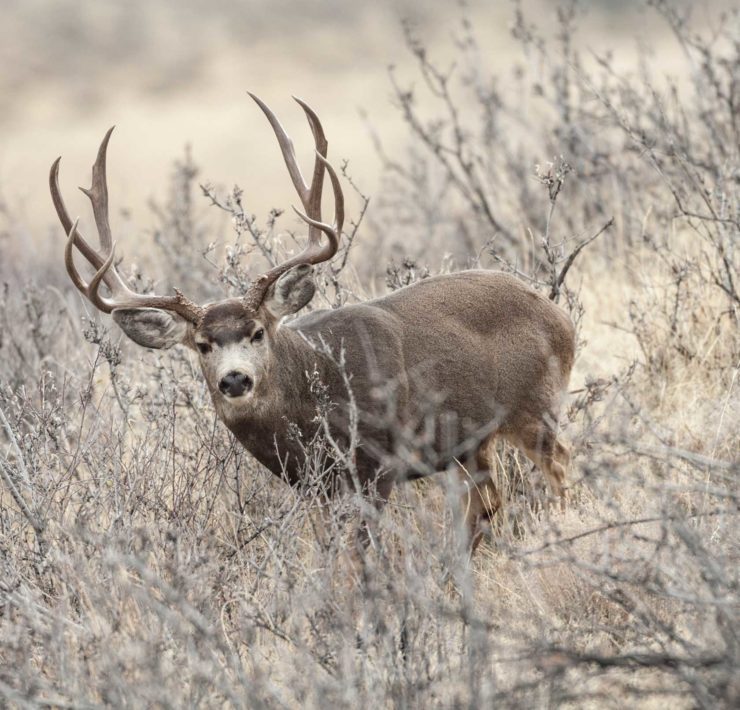The “We Got a Problem” Bag

By: Cody Fongemie
You have just finished a grueling day in the backcountry looking for mule deer. To the west, you see the sun setting. It’s time to make your way back to the truck, so you grab your GPS. You instantly know something is wrong as your thumb goes across the screen. It’s smashed.
You do not know how it happened, but it happened, and now your GPS is down, and it’s getting dark. You didn’t bring anything more than your daypack and rifle because this was a day trip. But here you are as the sun sets and temperatures drop.
This situation occurs across the country more often than you think, from our fellow hunters to folks just hiking. You never know when you could find yourself in a survival situation in the backcountry. So what can you do to be prepared if this happens? There is one thing you can do to prep: it just takes a zip lock bag. The “We Got a Problem” bag, as I call it. In this bag, are items can help you make it at least 24 hours or longer in a survival scenario.
The Bag—A gallon or half-gallon zip-lock bag or a bag of similar size that can retain water.
It needs to be waterproof to keep your stuff dry and to collect water if need be. The goal with keeping it that size is that it should fit in a cargo pocket or another pocket that should always be on your person. You want to be able to keep it on your body in case you are separated from your pack.
A lighter wrapped in Gorilla tape: The lighter is key. It can start a fire. Now I say Gorilla tape because, from talking to folks in the survival field and from personnel experience, Gorilla tape burns longer as a fire starter than traditional duck tape. This will give you more time to make a critical fire.
Emergency Blanket: This is the most expensive part of the bag. They are around 15 bucks, but they are key. You can first use them to stay warm, create a shelter, or signal.
Paracord: Paracord is one of the single most valuable tools you can ever have. It’s great for tying down gear and doing other things when you’re not in this survival situation. In survival situations, it can be used for many things, from making new shoelaces to helping build a survival shelter with your emergency blanket or even helping start fires.
Water purification tablets: On average, a person can go 72 hours without water. Now, thanks to your sandwich bag or the water bottle in your pack, you can use these water purification tablets to help do a quick purification to kill any bacteria that could be in there so you can keep going and stay hydrated, keeping you in the game and keeping you alive longer.
The bag you never want to need.
All these items fit perfectly in this bag; you can pop them in your pocket. It will be good to go in case anything ever happens. And that’s important: this isn’t meant to give you every tool. It’s intended to help you stay alive for 24 to 48 hours when help can often get to you, or you can devise a game plan to get to where you need to go.
Any additional gear you have on you in the survival scenario will increase your options. This is the bag that you never want to use, but it’s still a critical piece of kit. I recommend you get to a survival class to learn how to maximize your survival in a situation like this if you ever need to.
Good Luck!
Good luck this spring and remember to send any success pictures or stories from the field to [email protected]. You could be featured on our website or in our magazine. If this article or any of our articles have helped you become a better hunter or conservation steward, become a member of the Mule Deer Foundation or Blacktail Deer Foundation for only $35 dollars a year. Click here to join: https://muledeer.org/product-category/membership/

Cody Fongemie @Fongeinthefield
Born and raised in New England, Cody developed a deep appreciation for American history and adventure from a young age. His love for the outdoors led him to become both an avid outdoorsman and a dedicated writer on related topics. After studying in South Carolina, he enlisted in the Air Force, where he is currently serving. Outside of his military duties, Cody enjoys hunting, fly fishing, and sharing his experiences through his writing. He also works to connect the military community with the outdoors through non-profit initiatives.





